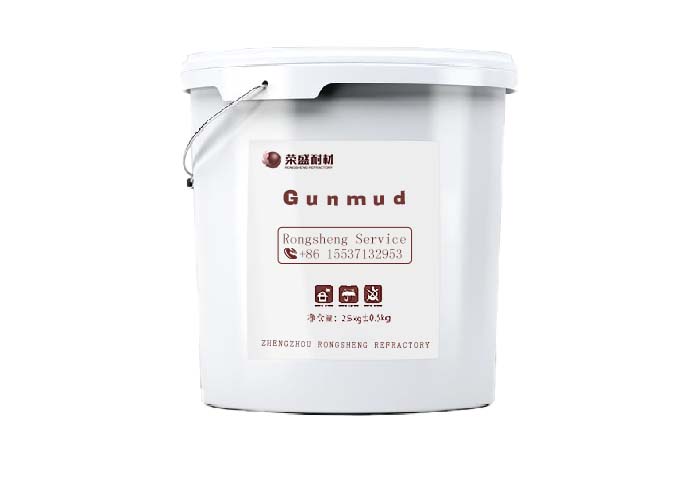Taphole clay is an amorphous functional refractory material, used in the process of plugging the taphole of the iron-making blast furnace.
The composition of gun mud can be divided into two parts: refractory aggregate and binder. Refractory aggregate refers to refractory raw materials such as corundum, mullite, coke gemstone and modified materials such as coke and mica, which are used to improve the refractoriness, high temperature performance and slag resistance of gun mud; the binder is water, tar pitch or phenolic aldehyde Organic materials such as resins can also be mixed with SiC, Si₃N₄, expansion agents and additives to improve the physical properties and product quality of gun mud.
According to the different binders, gun mud can be divided into two categories: water gun mud and waterless gun mud.
Domestically, medium and small blast furnaces (<2000m³) with low top pressure and low level of intensified smelting use water blasting mud; while large and medium blast furnaces (>2000m³) with high top pressure and high level of intensified smelting are generally used Anhydrous cannon mud.
Many foreign blast furnaces represented by Japanese blast furnaces generally use high-quality anhydrous gun mud, and are equipped with special opening methods and opening machines.
There are water cannon mud and water cannon mud are usually made of clay, coke powder, bauxite clinker and tar pitch as the main materials, and then mixed and stirred with water as a binder.
Water cannon mud is a type of cannon mud that was used in large quantities in the early days. However, due to its relatively small volume density and weak resistance to scouring of iron slag solution, it is easy to cause insufficient depth of the taphole and runaway during tapping when used on large and medium blast furnaces. Phenomena such as coke, iron tapping and venting and unclean iron slag will affect the normal production of the blast furnace. So far, due to the low cost of water cannon mud, many medium and small blast furnaces (<2000m³) are still improving their composition, working hard to adapt to the smelting environment, and their unit consumption is above 1.2kg·t⁻¹.
The composition of the water cannon mud fluctuates greatly, and it can be modified according to the different use conditions and requirements. Among them, coke and soft clay have a great influence on the properties of water-fired mud.
The soft clay content in the gun mud is high, and its plasticity is strong, which can make the gun mud form mud packs faster, but the soft clay will also make the air permeability of the gun mud worse and slow down the drying speed. The coke in the clay can increase the air permeability of the clay and make it easy to dry, but it will reduce the plasticity of the clay.


